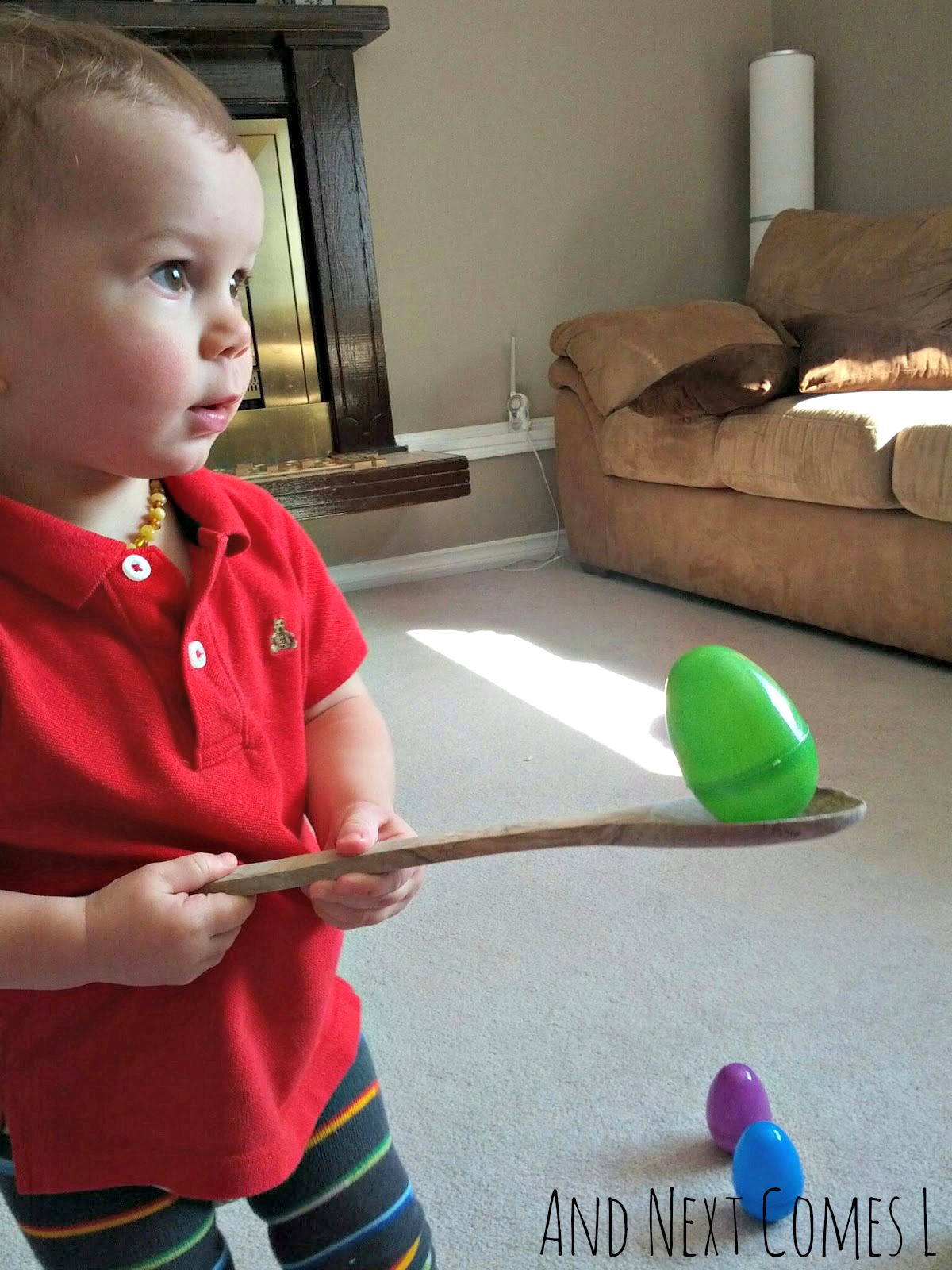When they were babies, you eagerly anticipated the first time they rolled-over, sat up, crawled, stood and walked. Now that they are getting bigger, you might be wishing they would just slow down a little bit. However, many of the gross-motor or big-body milestones your preschooler will reach have to do with balance.
Balancing requires leg and abdominal muscle groups to work together, and even as adults, it can be a bit tricky sometimes. Balancing small objects can also encourage fine-motor control.
So while your children are getting busy, you may want to take a few minutes every once in a while to develop this age appropriate challenge.
(Also, don’t be discouraged if they don’t get it right away. Every child moves at their own pace, and you likely have nothing to worry about.)
Big-Body Balancing Activities

Balance Beams– use literally anything you’re comfortable with them stepping on. It could be pool noodles, painter’s tape, string, spray paint in the grass, whatever you have lying around. Make a long line, or a large shape, and encourage them to move slowly, keeping their feet on the line.
Doing things on one foot– This is something you can work with them on incrementally. Have them put one foot on a ball, then switch feet. When they can do this with some stability, encourage them to stand like a flamingo. When they can handle that, have them hop on one foot. Make it fun! Be sure to put on some music or use a game to encourage them.
Other fun things that encourage balancing:

Egg walks– don’t put your Easter eggs away just yet. Start with large cooking spoons and let the kids practice and work their way down to cutlery spoons.
Spoon clean-up– In similar fashion, if they’ve made a huge mess with small toys, turn cleaning up into a game. Have them balance the toys on spoons and move them into the bins where they belong.
Pillow-case races– trash bags work too.
Stepping stones– even if you don’t have stepping stones, or are worried about falls, use pillows inside, or even just pieces of paper, flying discs or paper plates. Place them at a challenging distance for your child to make big steps, and big jumps.
Classics:
Building with blocks requires fine-motor finesse and is a classic way to get kids practicing not only motor skills, but creativity and engineering.
Stairs are something we likely all use daily. Don’t be afraid to let your child climb up and down on their own. If you’re worried, stay within arms reach, but let them practice and figure it out. When they’ve mastered the one-step at a time method, encourage them to try the alternating steps you probably use. Older children can have fun, and get worn out, skipping steps, too.
Whatever you do, make it fun!
Stay healthy,
Ms. Ashley and Ms. Bri